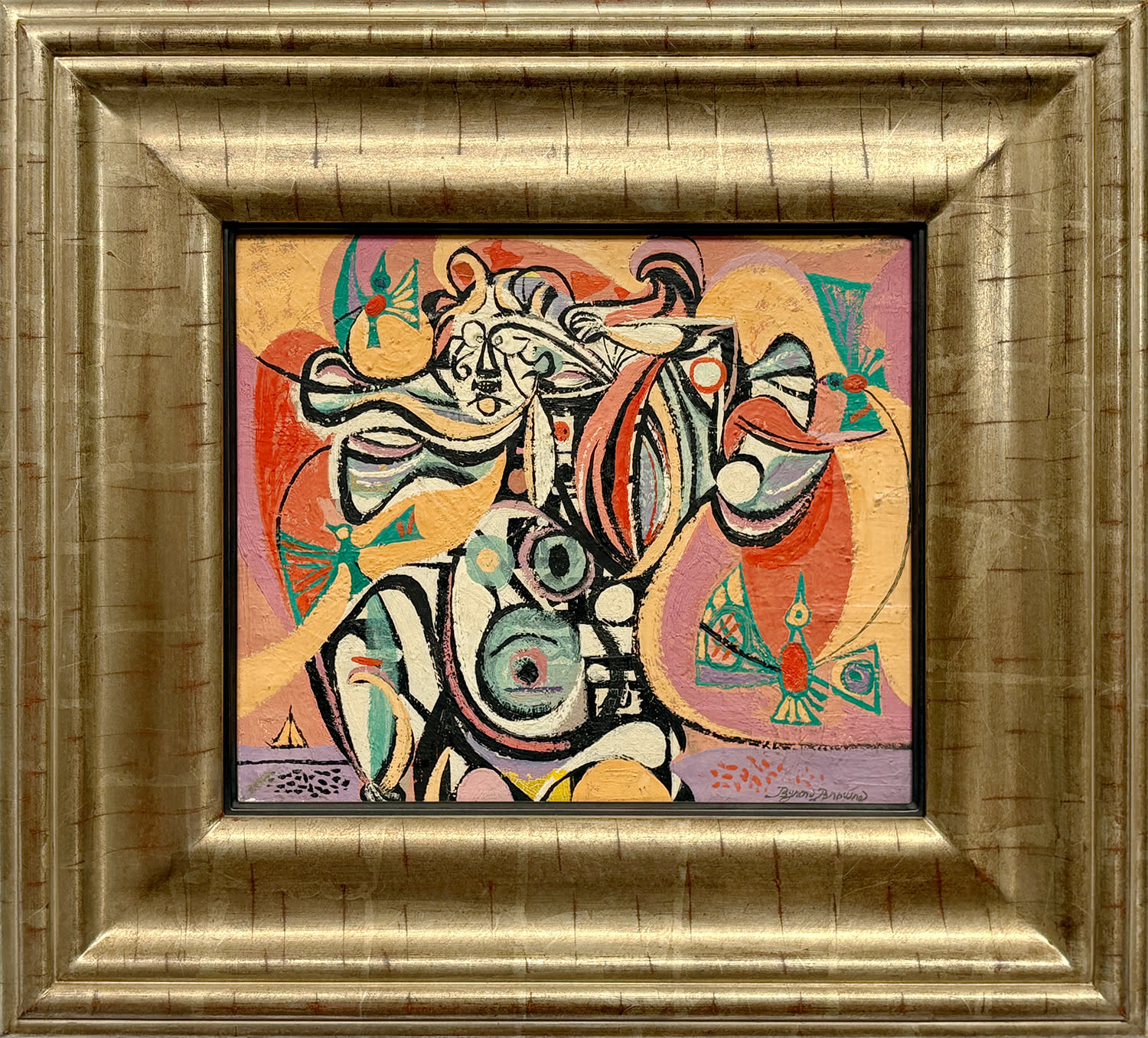artist
Browne was a pioneering modernist and one of the earliest and most vocal champions of abstraction in the United States. Born in Yonkers, New York, he studied at the National Academy of Design from 1924 to 1928, earning numerous awards, including the prestigious Third Hallgarten Prize. Though he began with a traditional academic foundation, a pivotal visit with his friend Arshile Gorky to Albert Gallatin’s Gallery of Living Art introduced him to the groundbreaking work of Picasso, Braque, and Miró. Inspired by this new language of form, Browne broke decisively from convention, famously destroying his early academic paintings, and embraced the belief that the future of art lay in abstraction, even as he retained core classical values as a point of departure.
Throughout the 1930s and 1940s, Browne forged a distinct style that blended Cubist structure with lyrical, biomorphic forms drawn from nature, striking a balance between recognizable imagery and pure abstraction. His commitment to modernism extended beyond the studio: he worked under the WPA Mural Division, completing major public commissions including for WNYC and the 1939 World’s Fair, and in 1936 co-founded the American Abstract Artists group alongside his wife, painter Rosalind Bengelsdorf, becoming a forceful advocate for abstract art during a period of strong resistance in the U.S.
Browne continued to evolve stylistically, shifting in the 1950s toward a more gestural, painterly approach. Over the course of his career he was the subject of more than sixty solo exhibitions and became an influential teacher at both the Art Students League, beginning in 1948, and later at New York University. Today, Browne is remembered as a key figure who helped shape and legitimize American abstraction, both through his inventive practice and his unwavering advocacy for the modern movement.
Description
Figure with Birds highlights Byron Browne’s command of bold, graphic geometry and his confident handling of form. The composition reflects the enduring influence of Picasso and Braque, whose Cubist innovations Browne absorbed and reinterpreted during this mature period. It also reveals his deep engagement with sources such as Pre-Columbian and so-called “Primitive” art, as well as the art of antiquity, traditions that shaped his linear clarity and sculptural sensibility.
In this painting, assertive geometric structures are animated by rounder, more organic shapes and curving lines reminiscent of Miró’s fluid visual language. Colorful prisms, scrolling motifs, and vibrantly rendered birds recall both American Indigenous imagery and mythic phoenix-like forms. While increasingly drawn toward abstraction in the 1940s, Browne still anchored passages of the painting in figuration, a visible arm, and large dotted circles that suggest human or animal eyes lend the composition a subtle narrative presence.
His palette of pinks, lilacs, peach, and coral contributes to an uplifting, sensuous atmosphere, underscoring his enduring reverence for nature and living forms. Within this chromatic harmony, shapes seem to turn, swirl, and tumble across the surface, energized by dynamic brushstrokes that heighten rhythm and movement. The result is a spirited and symbolically rich painting, vibrant, expressive, and alive with visual nuance, inviting the viewer into Browne’s lyrical and imaginative world.
provenance
Private collection, PA
Abby M. Taylor Fine Art, Greenwich CT
Private collection Greenwich CT






















